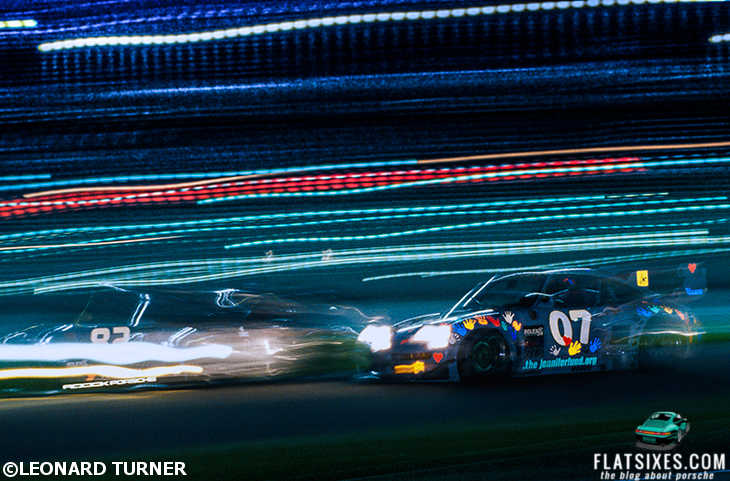It seems appropriate to offer a racing shot this time of year, as the sports car racing scene is about to undergo its annual rebirth at Daytona. Over the years, I was fortunate to have the opportunity to spend many days (and nights) there, sometimes hot and sweaty but more often cold beyond belief. It is northern Florida, after all, and this time of the year is unpredictable. What is predictable, though, is that night follows day in this 24-hour race, and some of the more dramatic photography becomes available in the dark.
1999 was one of those in-between years for Porsche, which was again in the position of not having an overall contender; the day of the 962 had waned and totally disappeared after 1993, and IMSA was finally having some success in its goal to have light weight racing prototypes like the Riley and Scotts and the Ferrari 333 SPs predictably finish ahead of the various flavors of 911s. Even so, the outgunned but numerous 911 Porsches ran a very successful watch-your-back game, more than willing and able to pick off an inattentive or crippled prototype.

This image of a pair of GT2s locked in battle utilized two types of lighting; the streaked background lights are the result of a typical “pass-shot “ technique in which the camera follows the two cars using a shutter speed slow enough to blur the background—probably around 1/30th second in this case. Just a touch of flash is used to help light the cars. Dialing the flash way back is important for two reasons; first, of course, not to interfere with the driver or his night vision, although that’s not so much of a consideration with a side shot like this one. But too much light from the strobe would also tend to show the wheels, freezing their motion and looking wrong in this context, and would over-light the reflective tape on the side of these cars, an important part of the overall effect. This type of lighting will often work best if your camera is set for “slow” or “second curtain” synchronization.
This 1999 race continued through the night and into the next day, as these things do, and at the end of the 24-hours both of these two cars joined the other four 911s in the top twelve finishers, ironically, in the process, besting the Riley and Scott prototype driven by Porsche stalwart Hurley Haywood.
